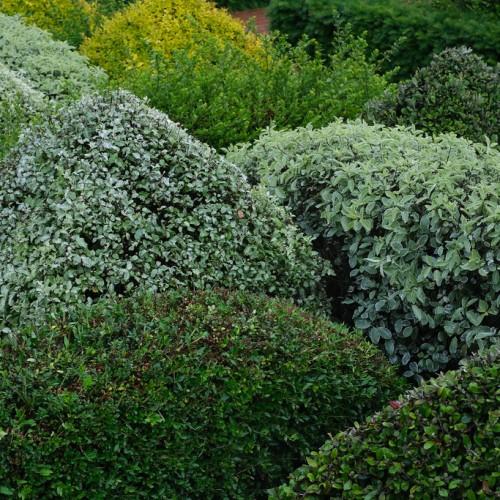
boxwood
Buxus sempervirens 'Salicifolia'
Cycle:
Perennial
Watering:
Average
Hardiness Zone:
5 - 8
Flowers:
Flowers In Spring
Sun:
Deep shade, Filtered shade, Full sun only if soil kept moist, Part sun/part shade
Soil:
Alkaline, Well-drained
Fruits:
Fruits In Summer Ready In Fall
Leaf:
Yes
Growth Rate:
Moderate
Maintenance:
Moderate
Care Level:
Medium
watering
Water boxwood plants deeply when the soil is dry to the touch, about once every 7-10 days in average weather conditions. During periods of extreme heat, water the plants more often, as they will use more water. The soil should feel moist to an inch below the surface after watering. Be careful not to overwater, as this can cause root rot and other diseases. If your plant is in a container, water until you see water come out of the bottom.
sunlight
Boxwood (Buxus sempervirens 'Salicifolia') is a type of evergreen shrub that thrives in sunny to partially shady areas. It will do best when given direct sunlight for at least 4-6 hours a day. When growing boxwood in full sun, it should be given a few hours of shade from the hottest midday sun to protect it from sun scorch and leaf burn. In the spring and summer months, boxwood will also need some afternoon shade to protect it from the intense heat. In colder seasons the boxwood will benefit from some morning sun but should be protected from the afternoon sun to prevent leaf burn.
pruning
Boxwood (Buxus sempervirens 'Salicifolia') is a beautiful slow-growing shrub that can be used for hedging, forming borders, or as a feature in a garden bed. Pruning is an important part of keeping boxwood looking its best. Generally, boxwood should be pruned twice a year - once in the spring and again in the fall. In the spring (March/April), boxwood should be shaped and thinned as needed. This pruning gives the boxwood a defined shape and allows light and air to penetrate all parts of the bush. Prune out any dead, damaged, or diseased parts of the bush. Look for any weak or crossed limbs and prune them back as needed to the main branch to open up the plant and make it look tidy. In the fall, boxwood should be lightly trimmed to neaten up the shape. It’s best to avoid hard pruning at this time, as it can lead to damage and encourage new growth late in the season. If necessary, prune lightly, removing only the tips of the branches. When pruning, clean and sharpened tools should be used to make sure the boxwood's branches are cut cleanly and evenly. Also, be sure to sterilize the pruning tools between plants to avoid spreading diseases.
Season
Hardiness Map
FAQ
Is Boxwood a popular landscape plant?
Yes, Boxwood is a popular landscape plant, due to its versatility in design, hardiness in cold temperatures, attractive foliage and its ability to be pruned into a variety of shapes. It makes an attractive year-round hedge, foundation plant or edging and, if left unpruned, can be grown as a small tree or shrub. Boxwoods can be planted either in the sun or partial shade and are a great addition to gardens of any size.
Are Boxwoods evergreen?
Yes, boxwoods are evergreen. They have deep green foliage and remain an attractive evergreen tree year-round, allowing for a versatile way to add color and structure to outdoor spaces. Boxwoods are also extremely easy to grow, making them a great choice for novice gardeners. Additionally, boxwoods are relatively low maintenance and can handle some light pruning if needed.
Can Boxwoods be trimmed into shapes?
Yes, boxwoods can be trimmed into shapes. With regular maintenance and occasional pruning, they can be cut and shaped into hedges, topiary, round forms and other creative patterns. Pruning them regularly also ensures that they remain healthy and look their best. It is important to trim them with the right tools and techniques in order to keep them healthy, while also achieving the desired shape.
Could Boxwoods be used as a hedge plant?
Yes, boxwoods can be used as a hedge plant. They are low-maintenance, evergreen shrubs that can be trimmed to create uniform hedges or shaped into topiary. Boxwoods are also resistant to disease and can tolerate both full sun and partial shade. They are ideal for small to medium hedges and make an attractive backdrop for annual and perennial flowers.
Should Boxwoods be planted in full sun or shade?
It depends on the variety of boxwood you have. Some varieties, such as English boxwood, are best planted in full sun for optimal growth and form. However, other varieties such as American and Korean boxwood do better in partial shade due to the more intense heat of full sun. In areas with long, hot summers and mild winters, provide some shade protection to prevent over-heating and drying out, especially during the hottest times of day.
